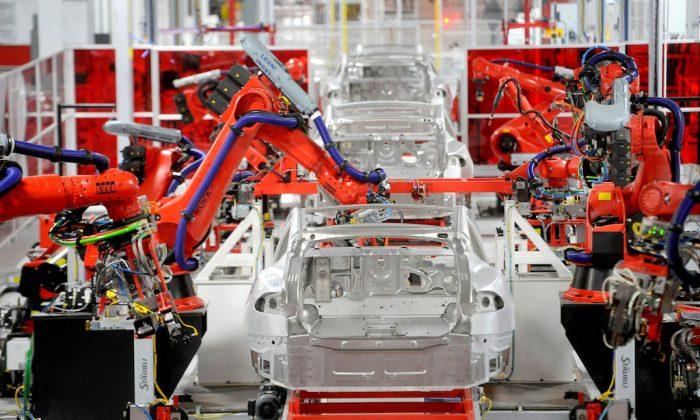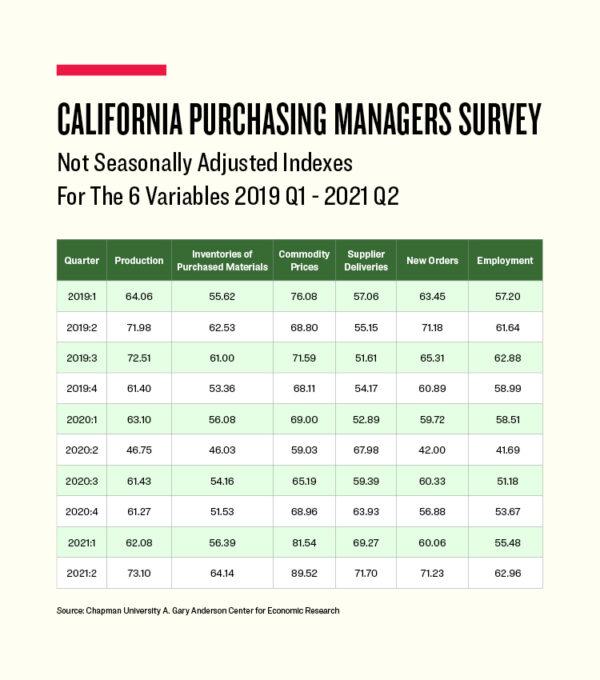The manufacturing sector in California is expected to be fully healed by the end of June, according to a recently released survey of California Purchasing Managers.
The survey was performed by Chapman University in Orange, Calif.
“The recovery of the manufacturing sector in California from the devastation of COVID-19 will be complete in the second quarter of this year,” said survey director and Chapman business professor Raymond Sfeir.
He does note, however, that the recovery in the manufacturing sector “will come sooner than the recovery of the services sector.” In other words, he expects the services sector, which includes hospitality and tourism, to take longer than the manufacturing sector to recover.
Purchasing managers are the professionals at industrial organizations who buy all the materials for the factories or companies where they work. As such, they often have the best view of where the economy is headed. They buy materials based on how plant managers expect to use those materials and how much inventory they expect to receive. Other factors include how much inventory their customers expect to add or reduce, and what personnel changes are expected.
Chapman University asked purchasing managers across California whether six factors are likely to increase, decrease, or generally stay the same during the second quarter (April through June), versus the first quarter (January through March).
The survey results were released April 7.
Purchasing managers were asked to assess second-quarter prospects for production, inventory levels of the materials at their companies, and commodity prices. They were also asked about deliveries of materials from suppliers to their companies, new orders, and employment.
Typically, economists prefer to use “seasonally adjusted” data because there are usually a number of predictable seasonal factors.
For instance, when people buy homes, it typically leads to furniture sales, which leads to a predictable seasonality in furniture deliveries. In a typical year, most homes are purchased between Spring Break and Labor Day.
Other typical seasonal factors are related to the Christmas gift-buying season, the beginning of a new school year, and many families taking vacations during the summer.
However, because home-buying continued well past Labor Day last year and because many other seasonal factors were atypical, Chapman University provided The Epoch Times with the non-seasonally-adjusted data, shown in the nearby table.
For each period, purchasing managers are forecasting whether that factor is expected to increase, decrease, or stay about the same as the previous quarter.
A reading above 50 generally means expansion, more or higher. A reading below 50 generally means contraction, less or lower.
For the second quarter of 2021, purchasing managers are very optimistic vis-à-vis the first quarter of 2021. Of course, this is largely a reflection of the end of the pandemic and a return to normal.
As can be seen, all indicators are higher now than at any other time, even in 2019, when the California real economy grew 5.3 percent.
Under normal situations, a reading of 73 for production would be seen by many as a sign of potential over-heating and oncoming inflation.
However, in the current circumstance, it largely reflects many factories coming back online after being shut down or operating at partial capacity during the pandemic.






